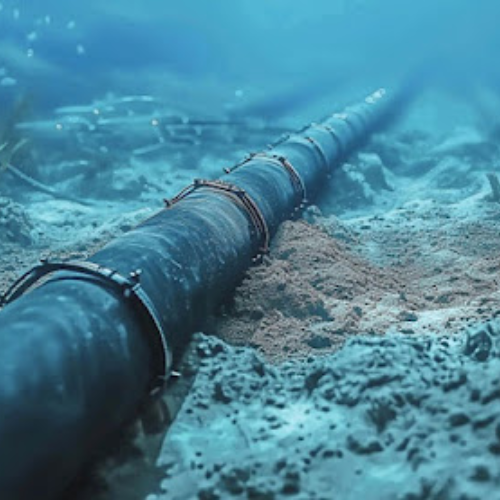In a troubling incident, an important undersea data cable connecting Sweden and Latvia was found damaged in the Baltic Sea. This disruption has raised alarms, prompting Swedish authorities to start a criminal investigation into the matter. Latvia has also taken swift action, sending a warship to investigate the situation. The damaged cable, which lies at a depth of at least 50 meters in Swedish waters, is owned by a Latvian organization and serves as a key link for data transmission between the two countries.
Latvian officials suspect the damage was caused by “external factors,” hinting at possible sabotage. The cable’s owner, Latvia’s state radio and television center (LVRTC), reported disruptions in data transmission. However, alternative solutions have been put in place to minimize the impact, ensuring most users experience only minor delays.
Suspected Vessel Under Scrutiny
The investigation into the cable damage has taken an intriguing turn with the identification of a “suspect vessel” near the site of the incident. The ship, named Michalis San, was detected in the area alongside two other vessels. According to maritime tracking websites, the Michalis San was reportedly headed toward Russia when the damage was discovered.
Latvia’s navy commander stated that they have a warship patrolling the Baltic Sea continuously, enabling a rapid response to such incidents. After learning about the damage, the warship was immediately sent to the scene. Sweden has also pledged to use its advanced capabilities to help investigate the situation and determine the cause of the cable’s damage.
Both Sweden and Latvia are working closely together on this case, alongside NATO, which has already been monitoring undersea infrastructure in the region. The incident adds to growing concerns about the vulnerability of critical infrastructure in the Baltic Sea.
Nations on High Alert
This is not the first time undersea cables or infrastructure in the Baltic Sea have been damaged. Recent months have seen several incidents where telecom and power cables were severed, fueling suspicions of sabotage. Many experts and political leaders have accused certain actors of waging a “hybrid war” by targeting vital infrastructure.
Undersea Chaos: Officials Blame Accidents, Not Russia, for Cable Ruptures
To address these concerns, NATO recently launched a new mission to patrol and monitor the Baltic Sea. The alliance now uses ships and aircraft to keep an eye on undersea networks, aiming to prevent further disruptions.
Sweden’s Prime Minister and Latvia’s leader have been in constant contact since the discovery of the damaged cable. Both countries, alongside NATO and the European Union, have expressed their determination to protect critical infrastructure.
While the Latvian cable operator managed to restore most services quickly, the incident has drawn widespread attention to the importance of securing these invisible yet essential lifelines. The European Union has also emphasized its support for Sweden and Latvia, highlighting that the safety of critical systems like these cables remains a top priority.
This alarming incident serves as another reminder of the fragile and vital nature of undersea networks, which are essential for global communication. As investigations continue, nations in the region are stepping up their defenses to ensure such acts of sabotage do not happen again.


